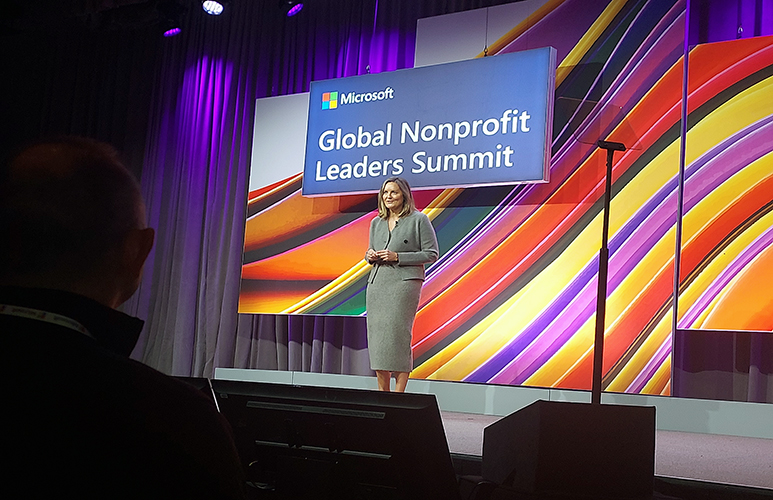Demystifying artificial intelligence (AI) and its integration into everyday nonprofit work and humanitarian progress are the central themes of the inaugural Microsoft Global Nonprofit Leader conference in Bellevue, Washington.
An announced attendance of 1,400 nonprofit professional staff and representatives from Microsoft technology partners from 1,192 nonprofits from 31 countries are at the event being held January 31 to February. It is being streamed to another 4,300 viewers online.
The conference was used to launch Microsoft Nonprofit Community, which is intended as a hub for discussions, digital skills training, blogs, events and group hubs specific to silos within the nonprofit sector.
Kate Behncken, corporate vice president and head of Microsoft Philanthropies, opened the event by acknowledging that AI should not just be advanced tech for techies. It should make technology accessible to everyone using everyday language. She called it “a force for global change” and said it is “for everyone and can benefit nonprofits of all sizes.”
AI is a broad set of technologies that have been around for decades in some cases, with the high-profile use case right now being ChatGPT, which uses a type of AI called Large Language Models (LLM) to mimic a conversational bot. Nonprofits have long been using AI and machine learning models for audience (donor) selection and smartphone assistants for predictive analytics to anticipate what a donor will do next.
Behncken called the present “the intersection of AI and social impact” and “hope for the future and power for the present” because of its potential to help to mor quickly get to answers. She also touched on the controversial elements of the technology, calling for responsible AI use and AI governance.
She was followed to the stage by Brad Smith, vice chair and president of Microsoft, who co-founded Kids In Need Of Defense, a nonprofit that provides legal services to children with immigration issues who are separated from their parents. Smith spoke of “the angel” side of technology and how there are 200,000 ophthalmologists in the world but 400 million people with diabetes who are at risk of going blind and need to be examined for diabetic retinopathy. Technology allows for a photo taken of an eye with a cell phone is “97% as good as an ophthalmologist” in making a diagnosis.
Every element of society is like a three-legged stool, he opined. Each element embodies innovation, adoption and diffusion. The diffusion is often the crisis: the world has not been able to bring electricity to roughly 800 million people, for example.
He believes technology and AI can resolve diffusion issues faster. He pointed to the federal CHIPS and Service Act which will infuse $53 billion that will be spent on technology development. “Microsoft will spend that in 12 months” building out an AI infrastructure, Smith said.
Smith called AI development “building a new industry” and said that it’s not enough to construct it but to also help people “learn how to use AI.” It won’t replace people, he said, but by getting questions answered more quickly it will “power curiosity” and provide the ability to solve problems.









